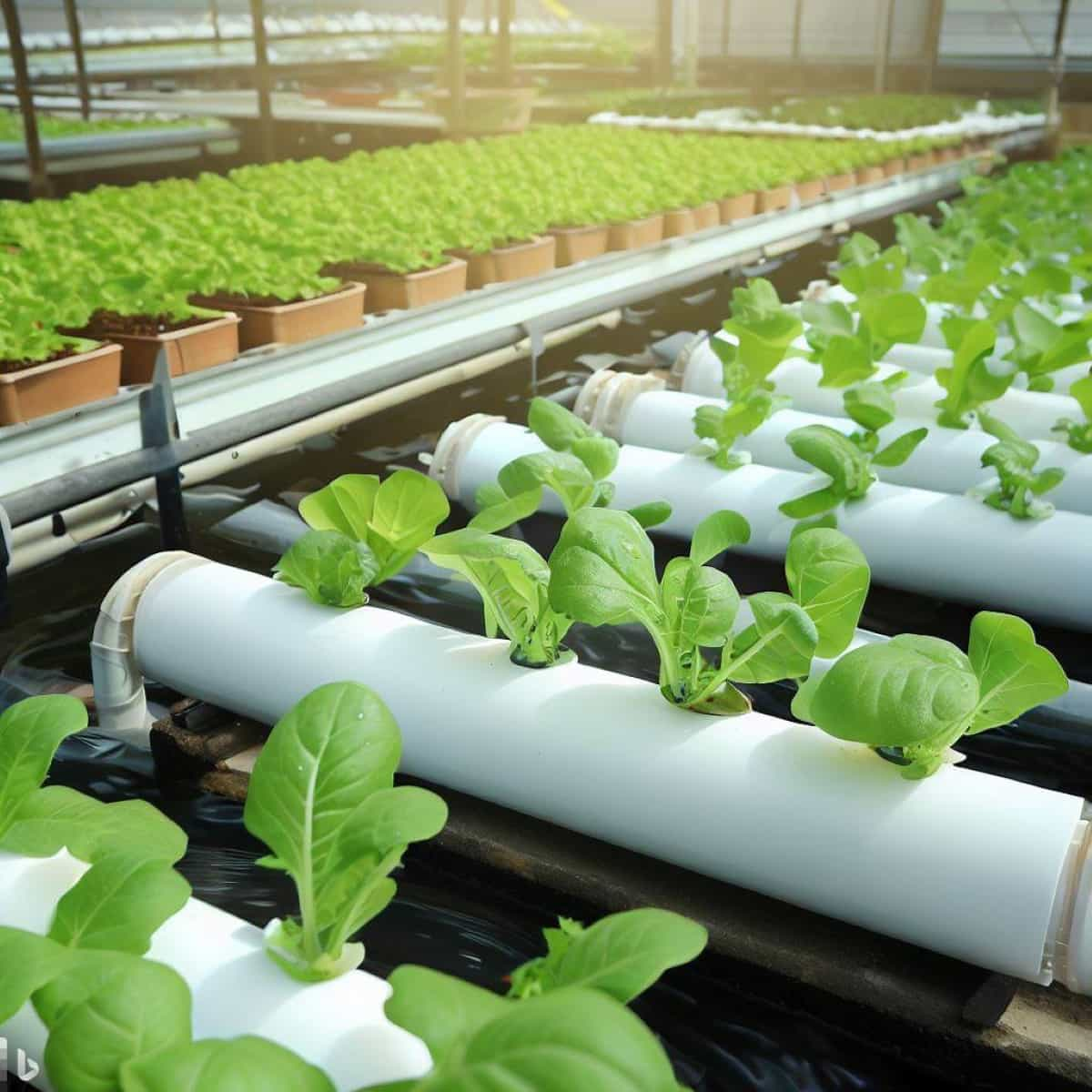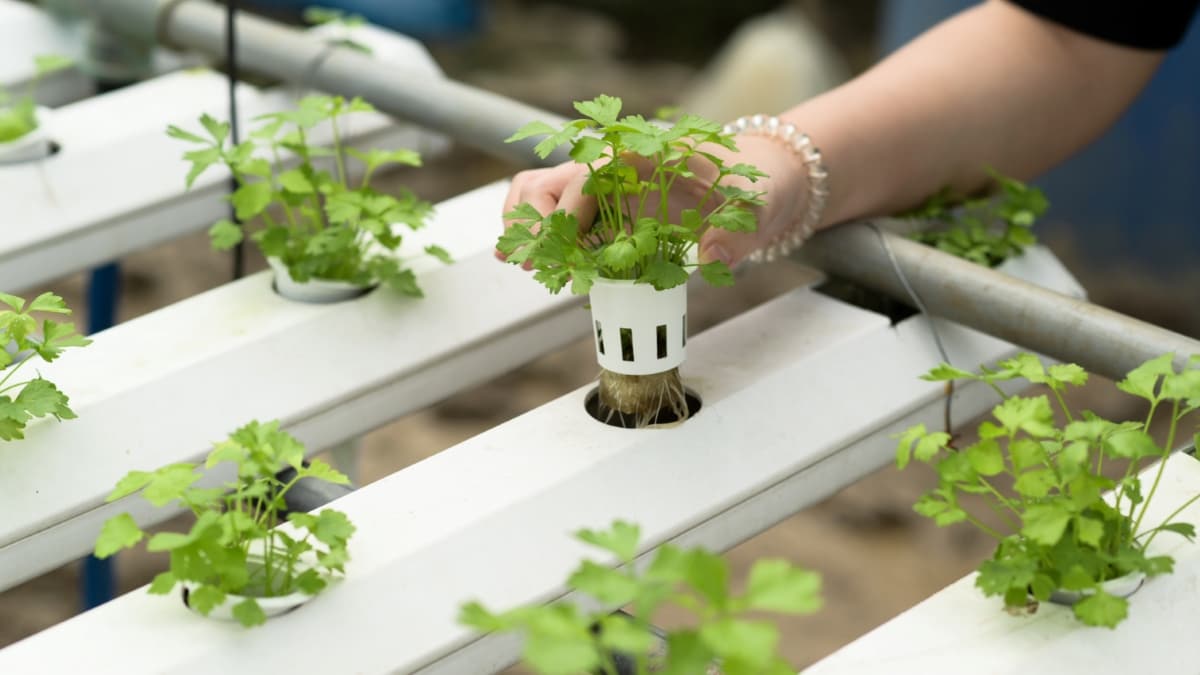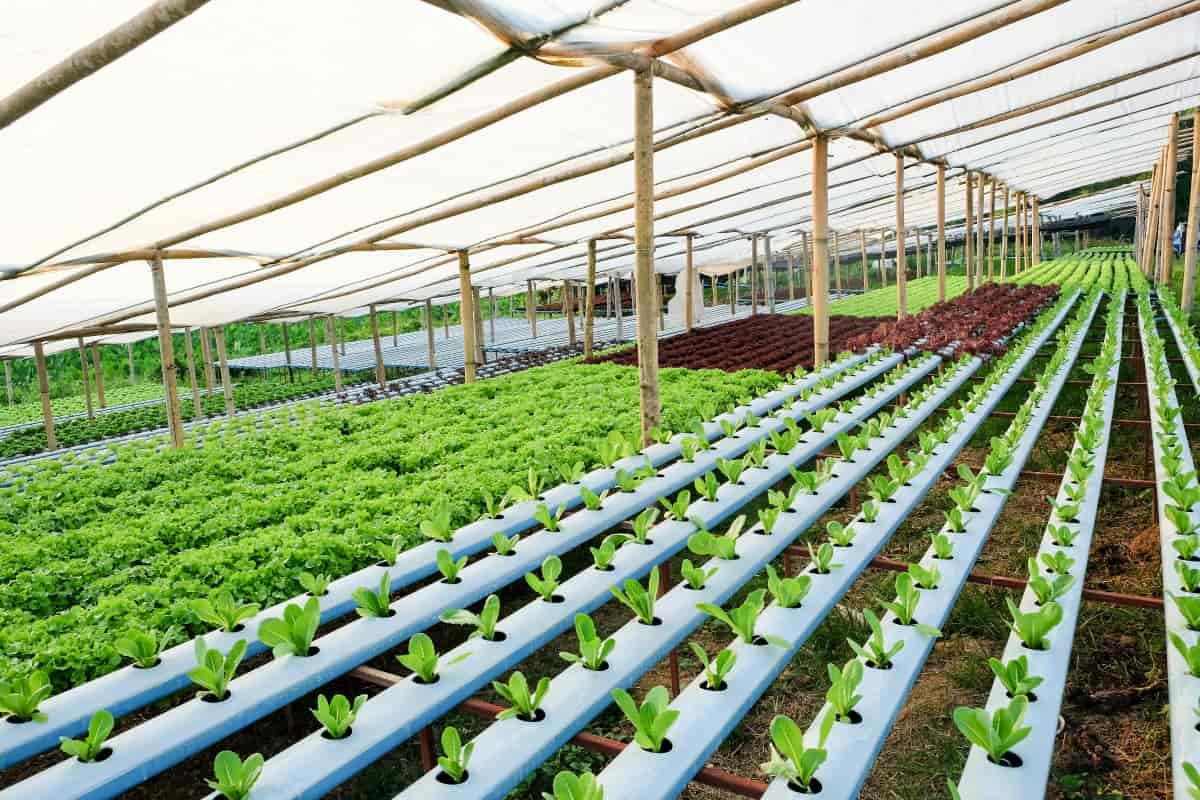Welcome to our blog on Aquaponics vs. Hydroponics, where we dive into the world of sustainable farming! These innovative cultivation methods have been gaining popularity for their efficient use of resources and ability to yield fresh, nutritious produce. While both systems rely on soilless techniques, key differences set them apart. Join us for explore the similarities and differences and how to evaluate their yield potential. Whether you’re a seasoned green thumb or a curious beginner, this article will illuminate modern agriculture’s fascinating realm.
Aquaponics Vs Hydroponics: A Comprehensive Comparison
Aquaponics and Hydroponics are soilless farming methods, but they differ significantly in nutrient sources, environmental impact, maintenance, cost, and complexity. In aquaponics, plants receive nutrients from fish waste, fostering a mutually beneficial relationship.

This results in low water usage and a unique ecosystem. However, maintaining fish health and water quality adds complexity to the setup. On the other hand, Hydroponics solely relies on a nutrient solution, leading to faster plant growth and precise nutrient control. Although initial costs can be higher in aquaponics due to fish tanks, Hydroponics offers a simpler and more affordable setup.
Similarities Between Aquaponics and Hydroponics
Aquaponics and Hydroponics share several striking similarities in their cultivation methods and resource utilization. Both systems are soilless planting techniques, making them highly efficient and water-saving alternatives to traditional farming. Both approaches provide nutrients directly to the plant’s root systems, leading to accelerated growth rates and higher yields.
Aquaponics and Hydroponics both avoid the need for the use of soil, which reduces the risk of soil-borne diseases and allows for more controlled nutrient delivery. The pH levels and nutrient concentrations can be closely monitored and adjusted in both systems, ensuring optimal conditions for plant growth. Furthermore, both aquaponics and Hydroponics enable year-round cultivation, making them suitable for various climates and locations.
Key Differences in Aquaponics and Hydroponic Systems
| Criteria | Aquaponics | Hydroponics |
| Nutrient Source | Fish waste provides nutrients to plants. | Nutrient solution is used to feed plants. |
| Environmental Impact | Low water usage due to recirculation. | Higher water usage as nutrients are not recycled. |
| Maintenance | Requires monitoring of fish health and water quality. | Requires regular monitoring of nutrient levels. |
| Cost | Initial setup costs can be higher due to fish tanks. | Generally lower initial setup costs. |
| Plant Growth Rate | Slower growth rate compared to hydroponics. | Faster plant growth due to direct nutrient delivery. |
| Nutrient Control | Nutrients supplied by fish waste can fluctuate. | Precise control of nutrients in the solution. |
| Complexity | More complex system combining fish and plant care. | Simpler system focusing on nutrient delivery. |
Yield Potential in Aquaponics and Hydroponics: A Comparative Analysis
Aquaponics and Hydroponics are cutting-edge methods of cultivation with distinct yield potentials. In aquaponics, a symbiotic relationship between fish and plants exists, with fish waste providing essential nutrients for plant growth. According to research, aquaponics yields show an impressive range of 3 to 4 times greater than traditional soil-based farming.
On the other hand, Hydroponics utilizes nutrient-enriched water to nourish plants directly, resulting in faster growth and a potentially 20 to 30% higher yield than conventional agriculture. The efficiency of Hydroponics in resource utilization is noteworthy, as it requires ten times less water than soil farming. However, aquaponics stands out for its eco-friendliness, using 90% less water than traditional methods.
Pros and Cons of Aquaponics and Hydroponics for High Yields
Aquaponics Pros for High Yields
- Nutrient-Rich Produce: Aquaponics utilizes fish waste to provide essential nutrients to plants, resulting in healthier and more abundant crops.
- Sustainable Water Use: This system recirculates water, using up to 90% less water than traditional farming, maximizing water efficiency for higher yields.
- Minimized Environmental Impact: By operating in a closed-loop, aquaponics reduces the risk of pollution and conserves natural resources.
- Faster Growth Rates: Plants in aquaponics thrive due to consistent access to nutrients, leading to accelerated growth and higher yields.
- Year-Round Production: With controlled environments, aquaponic systems offer the potential for continuous harvests regardless of external climate conditions.
- Diverse Crop Variety: Aquaponics accommodates different crops, promoting agricultural diversity and sustainable food production from leafy greens to fruits and herbs.
In case you missed it: Aquaponic Tomatoes: A Step-by-Step Growing Guide for Beginners

Aquaponics Cons for High Yields
- Complex Setup: Implementing and maintaining aquaponic systems may require a higher initial investment and specialized knowledge.
- Fish Health Management: Ensuring optimal fish health can be challenging, as fish are vital in providing plant nutrients.
- Dependency on Energy: Indoor aquaponics necessitates electricity for lighting, pumps, and temperature control, potentially increasing operating costs.
- System Vulnerability: A single failure in the system, such as a pump malfunction, can disrupt the delicate balance and affect yields.
Hydroponics Pros for High Yields
- Optimized Nutrient Delivery: Hydroponic systems provide a precise and consistent supply of nutrients to plants, leading to faster growth and higher yields.
- Water Efficiency: Hydroponics uses significantly less water than traditional soil-based agriculture, enhancing water conservation.
- Higher Crop Density: Plants in Hydroponics can be grown closer together, maximizing space utilization and increasing overall yield potential.
- Weed and Pest Control: Soilless cultivation reduces the risk of soil-borne diseases and weeds, resulting in healthier crops and higher productivity.
Hydroponics Cons for High Yields
- Nutrient Imbalance: Maintaining the correct nutrient balance in hydroponic systems can be challenging, leading to potential crop deficiencies or toxicities.
- Dependence on Equipment: Power outages or equipment failures can disrupt the system and impact yields, necessitating backup plans.
- Initial Setup Costs: Setting up a hydroponic farm may require significant investment in equipment and infrastructure.
- Limited Crop Variety: Some crops may not thrive in hydroponic systems, limiting the range of produce that can be grown.
In case you missed it: From Seed to Harvest: Hydroponic Nutrient Chart for Vegetables

Aquaponics Vs Hydroponics: Which System is More Productive?
- Aquaponics is an integrated system that combines aquaculture and Hydroponics.
- Research shows aquaponics can yield up to 3 times more produce than traditional soil-based farming.
- The mutual relationship between fish and plants in aquaponics enhances nutrient absorption, leading to faster growth rates.
- Aquaponics systems also demonstrate a higher efficiency in water usage, requiring 90% less water than conventional agriculture.
- Additionally, aquaponics contributes to sustainable farming practices by recycling nutrients and minimizing waste.
Hydroponics Productive
- Hydroponics is a soilless farming method where plants are grown in nutrient-rich water solutions.
- Studies indicate that Hydroponics can produce 30-50% more crops than traditional soil farming.
- This system allows for precise control of nutrient delivery, optimizing plant growth and resource utilization.
- Hydroponics also offers flexibility in location and can be implemented in various environments, including urban settings.
Factors Affecting Yield in Aquaponics and Hydroponics
To ensure optimal hydroponic growth, it is essential to maintain optimal water quality, fish health, plant selection, biofilter efficiency, system balance, dissolved oxygen levels, lighting, nutrient monitoring, and hydroponic factors affecting yield. Proper nutrient solution mixing, pH management, temperature control, plant variety, lighting, oxygenation, pest control, and system maintenance are crucial for optimal growth.
Proper water parameters, fish health, plant selection, biofilter efficiency, and a balanced ecosystem are essential for successful hydroponic cultivation. Regular maintenance of equipment is essential to prevent contamination and promote optimal growth.
Nutrient Management in Aquaponics and Hydroponics for Maximum Yield
- In aquaponics, fish waste provides essential nutrients like nitrogen, phosphorus, and potassium for plant growth.
- The nutrient-rich water is recirculated, reducing water usage by 90% compared to traditional farming.
- Research shows aquaponics systems can yield up to 4 times more produce per square foot than conventional soil-based methods.
- Optimal pH levels between 6.8 and 7.2 are crucial for nutrient uptake and maximum yield in aquaponics.
- In Hydroponics, nutrient solutions are precisely delivered to plant roots, promoting rapid growth and higher yields.
- Studies indicate that hydroponic systems can produce up to 30% more crops than traditional soil farming.
- pH levels between 5.5 and 6.5 are optimal for nutrient absorption and crop performance in Hydroponics.
- Hydroponic systems reduce water usage by 70-90% compared to traditional agriculture methods.
In case you missed it: How to Grow Orchids Hydroponically: Can Orchids Grow in Water?

Environmental Impact: Aquaponics Vs. Hydroponics Yield Evaluation
Aquaponics offers 90% less water usage, lower energy consumption, and eco-friendly nutrient release than Hydroponics. It reduces greenhouse gas emissions, supports sustainable fish production, and prevents soil depletion. Hydroponics uses slightly higher water usage, offers controlled nutrient release, and reduces carbon footprint. Both methods offer fast growth, higher yields, and soil conservation.
Conclusion
Aquaponics and Hydroponics are both eco-friendly options with water efficiency and reduced environmental impact. Aquaponics excels in fish production and nutrient recycling, while Hydroponics offers faster crop growth and higher yields. Choosing the right system depends on specific needs and priorities in sustainable farming.
- Feed Your Flock for Less: Top 10 Tips to Save on Chicken Feed
- Ultimate Guide to Ossabaw Island Hog: Breeding, Raising, Diet, and Care
- Hatching Answers: The Top 10 Reasons Your Chickens Aren’t Laying Eggs
- Eggs and Economics: Breaking Down the Cost of Raising Backyard Chickens
- Defend Your Greens: Proven Methods to Keep Iguanas Out of Your Garden
- Ultimate Guide to Cinnamon Queen Chicken: A Comprehensive Guide for Beginners
- Ultimate Guide to California Tan Chicken: Breeding, Raising, Diet, Egg-Production and Care
- Ultimate Guide to Marsh Daisy Chicken: Breeding, Raising, Diet, and Care
- 10 Types of Chicken Farming Businesses You Can Start for Profits